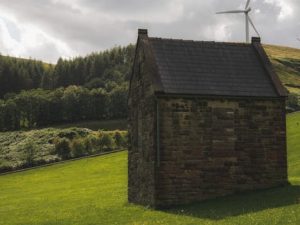Flood-Proof Homes: Innovative Designs for Coastal Areas
The damage caused by severe flooding in coastal areas is becoming increasingly common and devastating. Homes and buildings are continually at risk of being destroyed, leaving many families displaced and communities in ruin. With climate change and rising sea levels, it is clear that we need to find sustainable solutions to protect our coastal regions. This is where flood-proof homes come into play. With innovative designs, these homes are built to withstand intense flooding, providing a safe and secure place for residents. In this article, we’ll take a closer look at some of the most exciting designs for flood-proof homes in coastal areas.
The Rise of Flood-Proof Homes
Flood-proof homes, also known as flood-resistant homes, are built with materials and designs that can withstand flooding, minimizing the risk of damage and destruction. These homes are often elevated above the ground and have specialized features that allow them to withstand the force of rising waters. With the increasing frequency and intensity of floods, the demand for these types of homes has risen, and designers and engineers are constantly developing new and improved designs.
Elevated Designs
One of the most common features of flood-proof homes is elevation. These homes are typically built on stilts or concrete pillars, raising them above the ground and flood levels. This design is particularly effective in low-lying areas prone to flooding, as it allows water to pass underneath the home without causing damage. Additionally, many elevated homes have breakaway walls that can detach during a flood, further reducing the risk of damage.
Reinforced Foundations
The foundations of flood-proof homes are also reinforced with concrete or steel, making them more resistant to the impact of flooding. These materials are stronger and more durable than traditional wooden foundations, which can easily be damaged or even washed away by floodwaters. By strengthening the foundation, these homes can withstand the force of water, reducing the risk of structural damage.
Water-Resistant Materials
Another crucial feature of flood-proof homes is the use of water-resistant materials in construction. These materials are designed to resist water intrusion, preventing damage to the home’s interior and structure. For example, the walls and floors of these homes may be made of concrete or cement, which is less likely to absorb water and can withstand the force of floodwaters. Additionally, windows and doors are equipped with seals and barriers to keep water from seeping into the home.
Innovative Designs for Coastal Areas
While elevated designs and reinforced foundations are critical components of flood-proof homes, designers are constantly pushing the boundaries of innovation to create even more effective designs for coastal areas. Some of the most exciting and innovative designs include:
Modular Homes
Modular homes, also known as prefabricated homes, are built off-site and then transported to the desired location. These homes have become increasingly popular in coastal areas, as they can be assembled quickly and efficiently, reducing the risk of flood damage during construction. Additionally, some modular homes are designed to be elevated, making them ideal for flood-prone locations.
Green Homes
Green homes, also known as eco-friendly homes, are built with sustainable materials and energy-efficient designs. These homes not only benefit the environment, but they can also be an excellent option for flood-proofing in coastal areas. For example, some green homes have living roofs, which feature vegetation and absorb excess water, reducing the risk of flooding.
Mobile Homes
Mobile homes, also known as manufactured homes, are another innovative solution for flood-prone coastal areas. These homes are built on a steel frame with wheels, making them easy to transport to higher ground during a flood. They are also designed to withstand strong winds, making them an excellent choice for areas prone to hurricanes and tropical storms.
Conclusion
Flood-proof homes are essential for protecting coastal areas from the devastating effects of flooding. With the rise of climate change and sea levels, it is more crucial than ever to invest in innovative designs that can withstand the impact of rising waters. From elevation to water-resistant materials and new and improved designs, flood-proof homes are continually evolving to provide a safe and secure place for residents in coastal areas. With these innovations, we can move towards a more resilient and sustainable future for our coastal regions.











